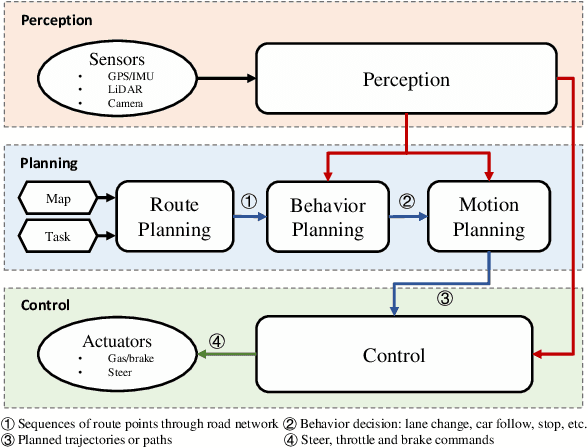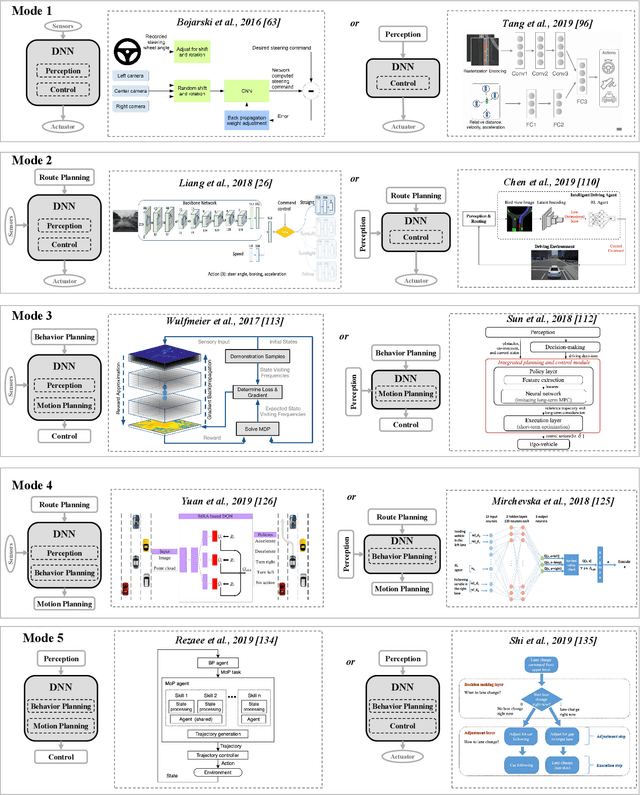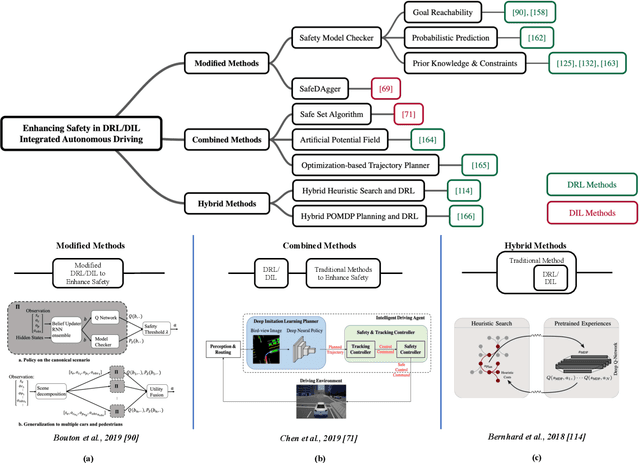A Survey of Deep RL and IL for Autonomous Driving Policy Learning
Paper and Code
Jan 06, 2021



Autonomous driving (AD) agents generate driving policies based on online perception results, which are obtained at multiple levels of abstraction, e.g., behavior planning, motion planning and control. Driving policies are crucial to the realization of safe, efficient and harmonious driving behaviors, where AD agents still face substantial challenges in complex scenarios. Due to their successful application in fields such as robotics and video games, the use of deep reinforcement learning (DRL) and deep imitation learning (DIL) techniques to derive AD policies have witnessed vast research efforts in recent years. This paper is a comprehensive survey of this body of work, which is conducted at three levels: First, a taxonomy of the literature studies is constructed from the system perspective, among which five modes of integration of DRL/DIL models into an AD architecture are identified. Second, the formulations of DRL/DIL models for conducting specified AD tasks are comprehensively reviewed, where various designs on the model state and action spaces and the reinforcement learning rewards are covered. Finally, an in-depth review is conducted on how the critical issues of AD applications regarding driving safety, interaction with other traffic participants and uncertainty of the environment are addressed by the DRL/DIL models. To the best of our knowledge, this is the first survey to focus on AD policy learning using DRL/DIL, which is addressed simultaneously from the system, task-driven and problem-driven perspectives. We share and discuss findings, which may lead to the investigation of various topics in the future.
 Add to Chrome
Add to Chrome Add to Firefox
Add to Firefox Add to Edge
Add to Edge